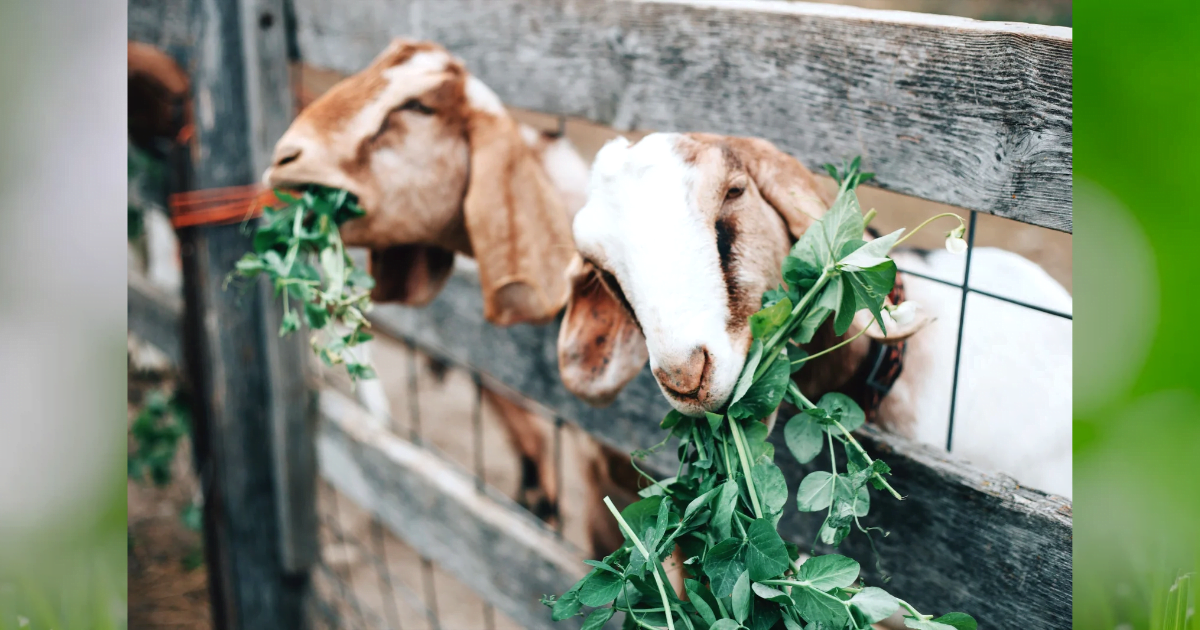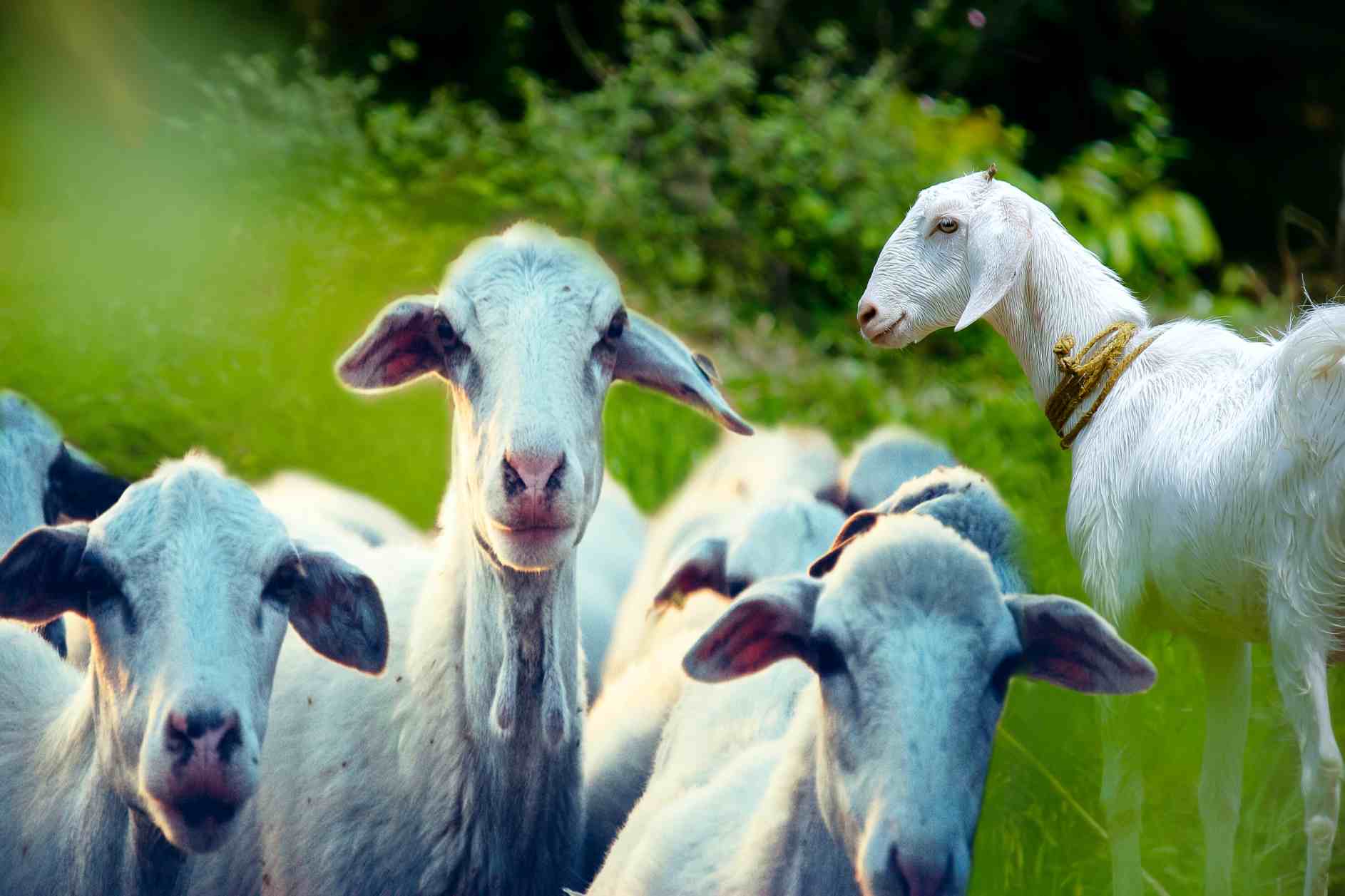
Goat farming is one of the newest and fastest growing agricultural industries in the world. There are many reasons for this boom, but the main one is that goats are a very efficient and reliable livestock. They are able to digest coarse fodder very well and produce high yields, which makes them a great choice for farmers who want to raise a lot of food with a small amount of land. In this post, we are going to discuss everything you need to know about goats, from where to buy them to how to care for them. We will also provide you with a list of the best goat farming resources, so that you can start your own goat farm and become a successful goat farmer. So read on and learn everything you need to know about goat farming!
1. What is goat farming?
Goat farming is a fascinating and sustainable way to produce food. Unlike cattle or chicken farming, goat farming does not require large amounts of land, water, or feed.
Goat farming is a great way to get started in agricultural production. It is also a good option for people who want to raise livestock without having to deal with the hassle and expense of owning a cattle or chicken farm.
Goat farming is simple to set up and can be done on a small scale. You can also sell your products directly to consumers.
There are a few things you need to know about goat farming before you get started. First, goats are browsers and as a result, they need a lot of grass to eat. You will need to provide them with enough grass to eat and to build their manure.
Second, goats are good foragers. This means that they can find food even in difficult conditions.
Last, goat farming is a good way to produce milk. Goat milk has a high level of protein and is a good source of calcium.
Read More: 8 Best Vegetables You Can Grow Indoors (Easy Beginner’s Guide)
2. How do goats keep warm in winter?
Goats are unique animals in that they are able to adapt to a wide variety of climates. In cold climates, goats are able to keep warm by burrowing down into the earth to stay warm. Goats also have a thick coat of fur that helps them stay warm. In warm climates, goats are able to drink a lot of water which helps them stay hydrated.
3. How do goats digest food?
Goats are ruminants, which means they have four-chamber stomachs that extract food and nutrients from plant material, so they must consume a lot of hay to get their nutrients.
Goats are able to digest cellulose and other tough plant materials, which is why they are used to digest fiber in hay.
4. How do goats produce milk?
Goats are unique animals that have been used for milk production for centuries. They are able to produce milk even when they are not given proper food. In fact, goats are able to digest grass better than humans.
Goats are able to produce milk faster than cows. This is because their anatomy is different. Their mammary glands are in the front of their body, which allows them to produce more milk in a shorter amount of time.
Goats also have a four-chamber stomach, which means they are able to break down cellulose more quickly than cows. This is why they are able to produce more milk and have less lactose.
5. Is goat farming sustainable?
Goat farming is a sustainable alternative to other livestock farming methods. There are a few reasons why goat farming is considered sustainable.
First, goats are browsers. They are not as dependent on pasture as other livestock, and they can be rotationally grazed. This means that the land can be used multiple times, without depleting the resources.
Second, goats are low-maintenance animals. They don’t require as much water or feed as other livestock, and they don’t create as much waste.
And third, goats are good for the environment. They are known to be efficient converters of vegetation into meat, and their manure is an excellent fertilizer.

6. What are the benefits of goat farming?
Goat farming is a great way to get started in the agricultural industry. Not only are goats a great animal to have on your farm, but they also have a lot of benefits that you may not have considered. Here are just a few:
They’re easy to care for
Goats are low maintenance animals, which means you won’t have to spend a lot of time worrying about things like feeding and watering them. In addition, they’re good foragers, so you won’t have to worry about them getting food from outside sources.
They’re efficient farmers
Goats are considered to be efficient farmers because they’re able to produce a lot of food with very little input. This makes them a good option if you’re looking to start a small farm or if you want to reduce your overall farming costs.
They’re good for the environment
Goats are considered to be a sustainable animal choice because they’re able to eat a lot of grass, which means they don’t contribute to deforestation. Additionally, they’re good for pollinating plants, which can help to increase crop production.
7. How to raise goats for milk production
Raising goats for milk production is a great way to get started in goat farming. Goats are very easy to care for, and they are very productive when it comes to milk production. If you have the space, goats can be a great source of income.
Before you start raising goats, you need to decide what type of goat you want to raise. There are three main types of goats: the Boer, the Nubian, and the Saanen.
The Boer is the most common type of goat, and it is used for meat. The Nubian is used for milk production, and the Saanen is used for both meat and milk production.
To raise a goat, you need to provide food, water, shelter, and a place to reproductive. You also need to provide a goat with a kidding box and a goat shed.
8. How to milk goats
Goat farming is a great way to produce milk and meat. This is a relatively new way of farming, and it is gaining in popularity because of the benefits it offers.
Milking goats is not as difficult as it may seem. You will need to have a few supplies, and you will need to know how to milk a goat. Here are the steps.
1. Get a goat
Before you can milk a goat, you first need to get a goat. There are a few different types of goats, and you will need to decide which one is best for your needs.
2. Feed the goat
Once you have a goat, you will need to feed it. Feeding a goat is important, and it will help the goat grow.
3. Milk the goat
Now that the goat is fed and healthy, it’s time to milk the goat. To milk a goat, you will need to do the following:
– tie the goat’s neck
– lift the goat’s tail
– milk the goat
4. Clean the goat
Once you milk the goat, you will need to clean the goat. This will ensure that the goat is healthy and that you do not get sick.
5. Prepare the milk
Now that you have milked the goat, you will need to prepare the milk. This will include processing the milk and making sure that the milk is safe to drink.
9. How to butcher a goat
If you’re thinking of getting into goat farming, there are a few things you’ll need to know about butchering a goat. First and foremost, you’ll need to have a sharp knife. Second, you’ll need to be able to hold the goat still so the knife can do its job. And finally, you’ll need to be able to bleed the goat.
Butchering a goat is a process that’s not as difficult as it may seem. First, you’ll need to make an incision on the goat’s neck just below the ear. This will allow you to bleed the goat without having to puncture the skin.
Next, you’ll need to make an incision on the goat’s side opposite the one you just made. This will allow you to cut off the goat’s mammary gland.
After that, you’ll need to make another incision on the goat’s side just below the first one. This will allow you to cut off the goat’s hindquarter.
Last, you’ll need to make an incision on the goat’s ribcage just below the shoulder. This will allow you to cut off the goat’s shoulder blade.
We hope you enjoyed our blog post about goat farming! Goat farming is a great way to get your feet wet in the agricultural world. We touched on a few key points that will help you get started. We also included a few tips on how to keep your goats healthy and happy. If you have any questions, please don’t hesitate to reach out! We would love to help you out.
10. FAQ about goat farming
Goat farming is a great way to get your feet wet in the agriculture world. It’s a low-impact way to produce food and it’s a great way to get your family involved in the agricultural process. Here are some FAQ about goat farming to get you started:
1. What kind of goats are best for farming?
The best goats for farming are the ones that are hardy and have the temperament for being around other animals. Goats that are used for milk production are usually not the best for farming because they are not as hardy.
2. Do I need to get a permit to farm goats?
No, you don’t need a permit to farm goats. However, you will need to get zoning approval if you want to farm goats for meat or milk.
3. How many goats can I farm on a piece of land?
You can farm up to eight goats on a piece of land.
4. How much does a goat cost to buy?
The price of a goat ranges depending on the breed, sex, and age. Most goats cost around $500.
5. How do I feed my goats?
You will need to provide the goats with hay, fresh water, and a diet that is high in fiber. You can also give them grains, minerals, and vitamins.
6. How do I milk my goats?
You will need to milk your goats by hand. You can also buy a milking machine.
7. How do I keep my goats healthy?
You will need to keep your goats healthy by providing them with fresh water, hay, and a diet that is high in fiber. You can also give them grains, minerals, and vitamins.
2 thoughts on “Goat farming : All you need to know about goat farming – Green lifo”